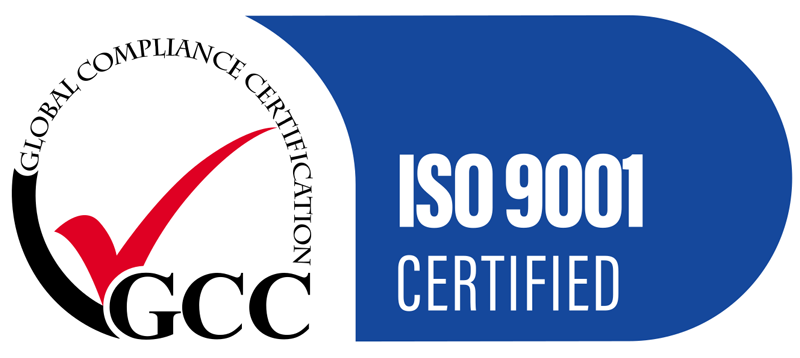People have used iron for thousands of years, and yet it is only within the past 150 years that we’ve learned how to produce steels with a consistent level of quality. It was even later when stainless steel made its mark on the world.
The invention of stainless steel has made a huge impact on our lives. It plays an important role in sustainable design, it’s highly recyclable, has a long service life, and perhaps most unique of all, is corrosion resistant and durable.
In this article, we consider the history of stainless steel (also known as inox steel or inox), when and how it was developed, and what it’s used for today.
Early stainless steel
It is generally accepted that stainless steels were discovered in Europe somewhere in the early 1900s. However, it took about one hundred years of scientific discovery to produce stainless steel as we know it today.
From about the early 1800s, metallurgists from England and France had noted that iron-chromium alloys were more resistant to corrosion. In 1872, the first ever patent was filed by Englishmen Woods and Clark on an acid and weather resistant iron alloy containing 30-35% chromium and 2% tungsten.
Until this point though, scientists had not understood the importance of low carbon content. Crucially, in 1875, it was discovered that in order to create an alloyed steel with a high percentage of chromium, the carbon content must remain below around 0.15%. It wasn’t until the close of the 19th century that researchers developed the aluminothermic reduction process for producing carbon-free chromium.
These fundamental discoveries paved the way for the development of a range of alloys in the early 1900s, which became collectively known as stainless steel.
Modern types and applications
Today, there are more than 150 grades of stainless steel, of which fifteen are most commonly used. Stainless steels are generally classified as follows:
- Austenitic Grades – Austenitic stainless steels are the most corrosion resistant due to their high chromium and nickel content. The most common austenitic alloys are iron-chromium-nickel steels and are widely known as the 300 series. They are not magnetic.
- Martensitic Grades – Martensitic grades are straight chromium steels and contain no nickel. They were developed to be corrosion resistant and hardenable by heat treating. Martensitic grades are mainly used where hardness, strength and wear resistance are required. They are magnetic.
- Ferritic Grades – Ferritic grades were developed to resist corrosion and oxidation, while being highly resistant to stress corrosion cracking. They cannot be hardened by heat treating, however, they can be cold worked and softened by annealing. They are magnetic and are typically used for decorative trim, sinks and automotive applications.
- Duplex Grades – The newest stainless steel group is a combination of austenitic and ferritic materials, and produces a higher strength and superior resistance to stress corrosion cracking.
- Precipitation Hardening Grades – This group of stainless steels provides a unique combination of fabricability, strength, ease of heat treatment and corrosion resistance not found in any other class of material. Precipitation hardening grades are primarily used for bar, rods, wire and forgings, but increasingly are being used in flat rolled form.
As stainless steel, in its many forms and grades, are highly resistant to rust, corrosion and staining, it is the ideal material for many applications. It can be fabricated into plates, sheets, bars, wire, coil and tubing, and can be used in anything from cookware and household appliances to jewellery, surgical instruments, industrial equipment, bridges, firearms and more.
Stainless steel is also 100% recyclable. Interestingly, an average stainless steel object is composed of about 60% recycled material.
Looking for local steel profile cutters? Contact ShapeCUT
For more than 20 years ShapeCUT has been delivering quality profile cutting and oxy cutting to fabricators and manufacturers servicing the transport, mining and construction industries.
Today, with 10 modern machines (including oxy cutting machines, HD plasma cutters and now a new laser cutter), 5000+ tonnes of in-house plate stock, market-leading systems and experienced staff, ShapeCUT is an industry leader in steel profile cutting. Contact ShapeCUT today on 1800 ShapeCUT (1800 742 732) for a quote.
Contact Us To Find Out More
We ensure a fast, exact and economical steel solution for our clients. Call our team today to discuss your steel cutting and metal processing requirements.
Get Our Newsletter
Contact details
121 Mica Street, Carole Park,
QLD, 4300, AUSTRALIA
Freecall: 1800 SHAPECUT (1800 742 732)
Telephone: (07) 3271 5600
Facsimile: (07) 3271 5454
Email: sales@shapecut.com.au
Accredited Profile Cutting

Profile Cutting
Metal Processing Services
©2025 ShapeCut | Website design Brisbane by iFactory | Privacy Policy | Search | Sitemap



